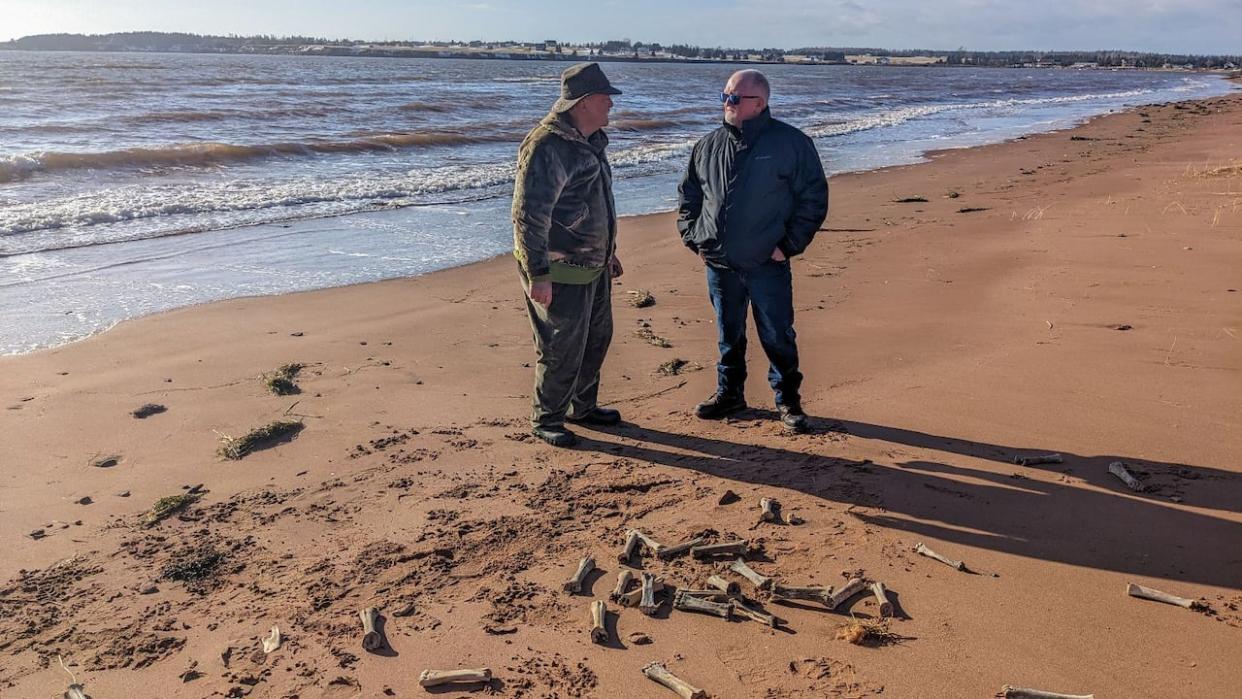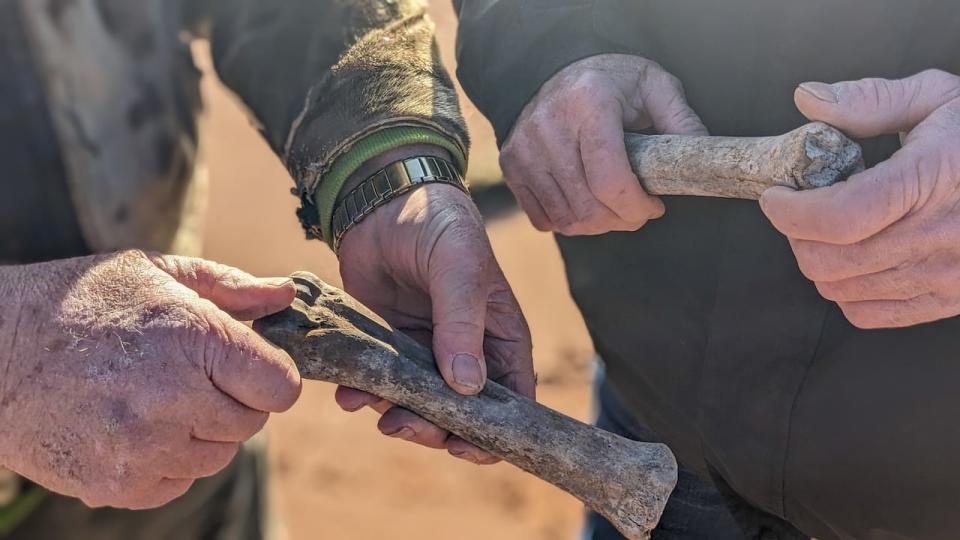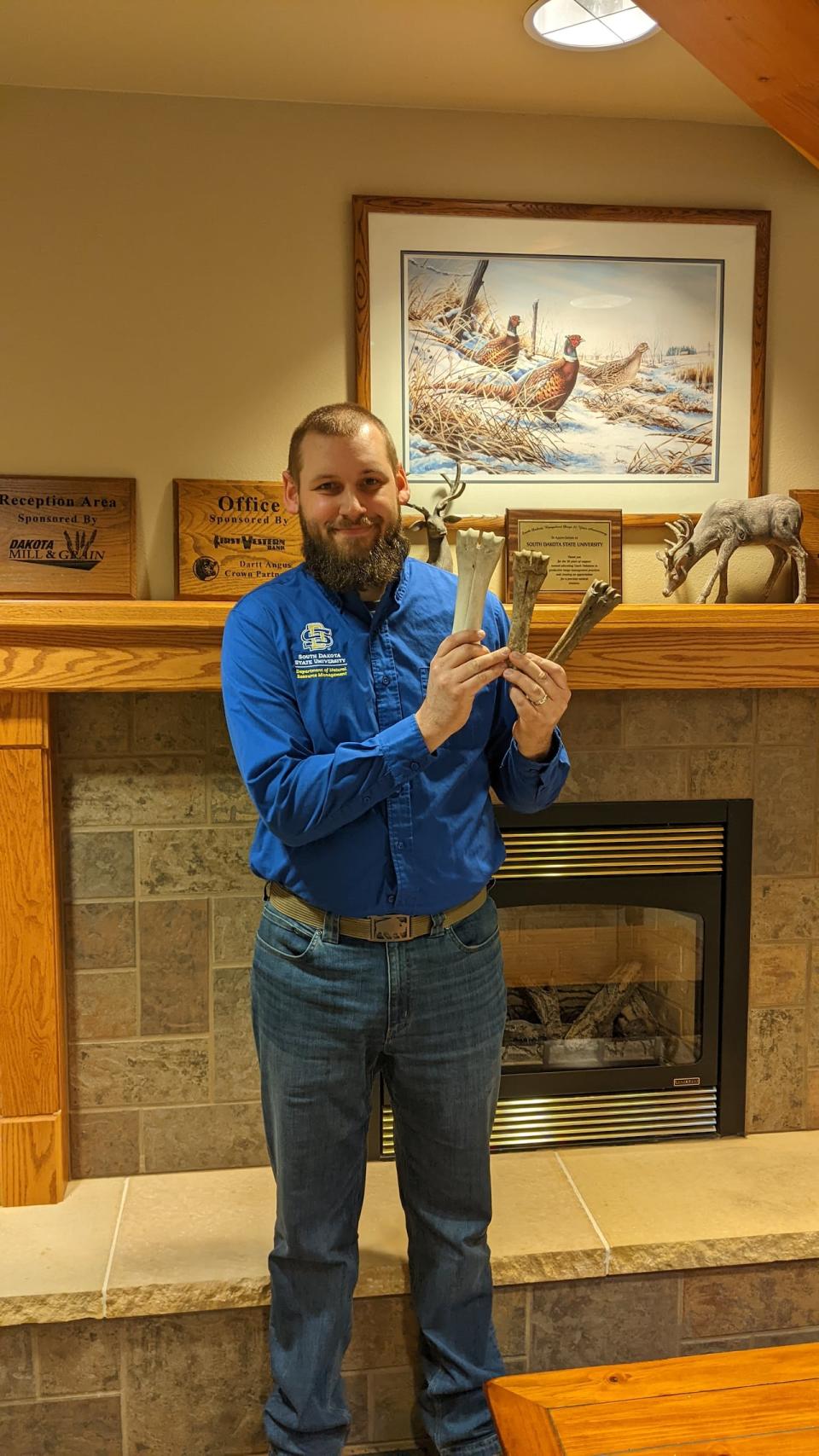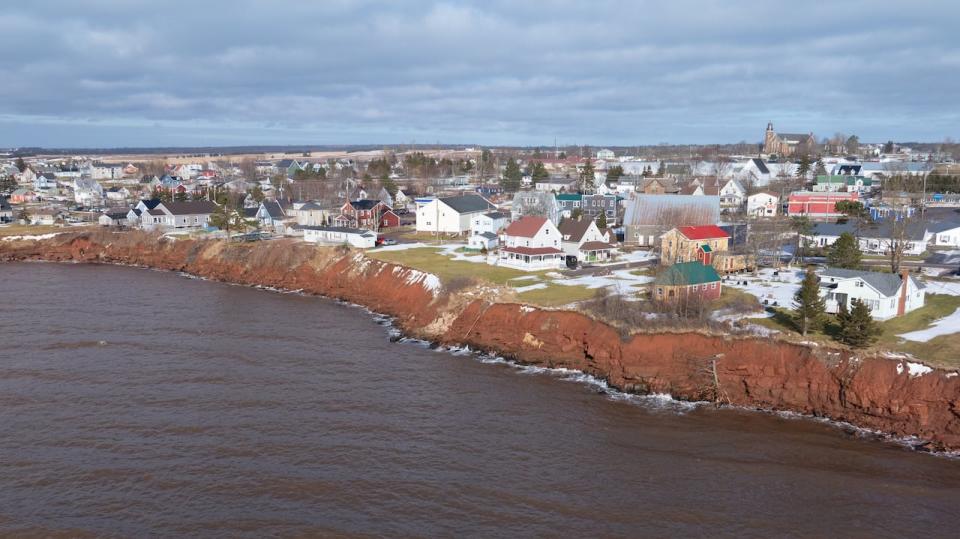Why fossilizing bones that washed up on a P.E.I. beach have some locals abuzz

A walk on a northeastern Prince Edward Island beach has turned into a quest for answers for an Island man and his friends.
Ron Howse spotted a bin full of bones when he was finishing up a walk along the beach in Souris in August 2023. The town had placed the bin there for people to throw debris into, and someone had tossed in the bones.
These were not just any bones, though: Their darkening colour indicated that they were in the process of fossilizing, or turning into rock-hard minerals, and there were at least 50 of them.
Howse was hooked.
"We've been here looking for sea glass and have never seen bones like this," Howse said.
"Rita Clinton, who lives here and [has] been here for a long, long time, and walks the beach daily, said she's never seen bones like this either. So it was like a new occurrence. And so we said, 'Let's look into this.'"
Howse said their first theory was that the bones could be from a moose that had been hunted, so he reached out to the Mi'kmaq community association L'nuey.
"They were enthralled with the story, and the bones, and they sent [the case] off to a bone specialist in Fredericton, a retired bone specialist," Howse said.
"They sent her pictures; they never sent her the bones. And they came back and told us by an e-mail that they were cow bones and they had no archaeological significance."
Bison bones, perhaps?
After doing more research, Howse turned next to a retired archaeologist in the United States, who led them to another idea.
"His theory was that bison roamed this land all over here 8,000 years ago because there was no water here. This was all [land] right to Nova Scotia, all the way up to the southern shore of Quebec," Howse said.
"That led me to thinking that maybe they were bison bones."

The bones have started to mineralize, or grow darker and harder, on the way to becoming fossils. (Shane Hennessey/CBC)
Howse sent two of the bones to be analyzed by Jeff Martin, an assistant professor of bison biology and management at South Dakota State University.
Martin concluded the bones were indeed from beef cattle, and not bison. But he said the bones were still of interest because they had started to mineralize, on the way to becoming a fossil.
He pointed to the way the bones had started to change colour, going from white to dark.

Jeff Martin, a bison specialist at South Dakota State University, holds the two bones Howse sent him from P.E.I. on the right, and a bison bone on the left. (Submitted by Jeff Martin)
"Finding any fossils in Canada is unique," Martin said. "Whether this is a fossil or not still needs to be determined by radiocarbon dating.
"With it being a beef cow, that means that it could be anywhere from 50 years old to 500 years old, give or take — basically the time of colonial settlement."
More bones post-Fiona
The story of the bones took another twist when Howse showed them to two women who were visiting his house.
It turned out they too had found bones on the Souris beach, even larger than the ones Howse was showing them, just after post-tropical storm Fiona hit in September 2022.

Howse has been told even larger bones were found farther along Souris beach but they can't get to them yet because that part of the beach is accessible only during the lowest tides of the year. (Shane Hennessey/CBC)
Howse said the women said the bones had "the same configuration, the same nodules, the same hump, except they were 21 to 22 inches long, and they said they have anywhere from 28 to 30 bones.
"They didn't know what to do so they just took them and threw them up in the rocks, and we've been looking for them ever since."
Howse can't get to the area where the bones might be because the women were walking on a part of the beach that is exposed only during the very lowest tides of the year.
If they can retrieve what he believes to be thigh bones or femurs, Howse said they will send them to South Dakota for Martin to take a look.
Carbon dating
In the meantime, he has sent four grams of the bones to a laboratory in Ottawa for radiocarbon dating, a process that can estimate the age of material that originated from living organisms.
"If they're older than 200 years, then we've got a real conundrum," Howse said. "Because cows never arrived here until 1785, according to all the historical documents I looked at — and not very many, actually."

Lennie Rose (right) works for the Town of Souris during the summer, helping to keep the beach clear of garbage, especially broken glass. (Shane Hennessey/CBC)
Whatever the final answer, he said, the mysterious bones have provided an adventure for him and his friends.
"I have the time, so I'm putting the time in," Howse said. "I love it. We've had more laughs over these bones."

Howse first spotted the bones in a bin that had been placed by the Town of Souris to collect garbage and other debris from the beach. (Shane Hennessey/CBC)
Martin said he regularly receives submissions like the one Howse sent him, and he anticipates more of this kind of discovery as climate change leads to increased storm activity along shorelines like Prince Edward Island's.
The really neat thing about finding a bone, an animal bone, on any property, wherever you're scouring or digging, is that it is now an innate …connection to the past. — Jeff Martin, South Dakota State University
"It is really hard work to dig either an archaeological site or a paleontological site. So when Mother Nature can help move some of that dirt for us, we're grateful," he said.
"The really neat thing about finding a bone, an animal bone, on any property, wherever you're scouring or digging, is that it is now an innate… connection to the past.
"I would imagine that there be quite a few provincial paleontologists that are also just chomping at the bit to go see what else we're going to find, as well as archaeologists," Martin said.

